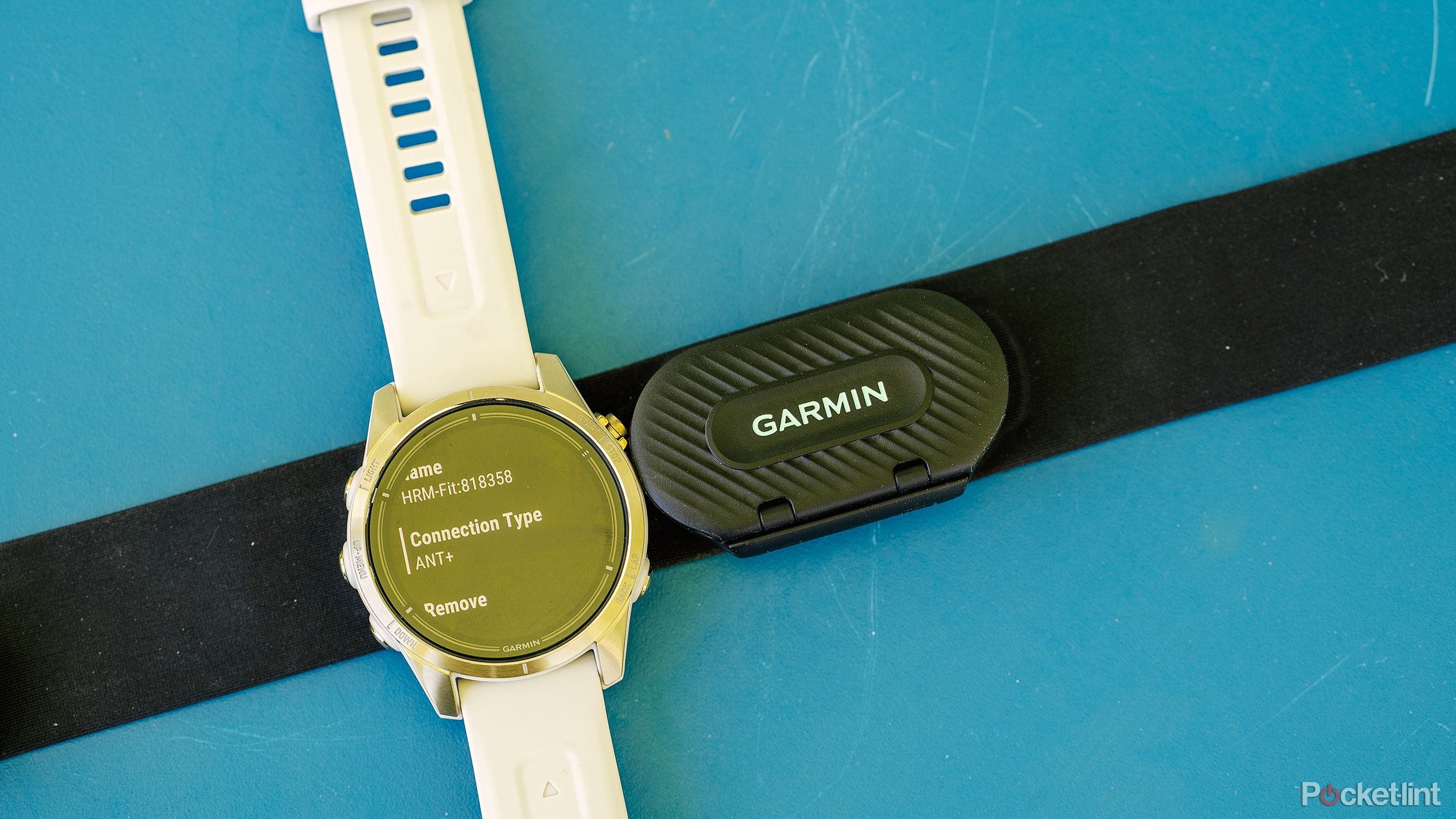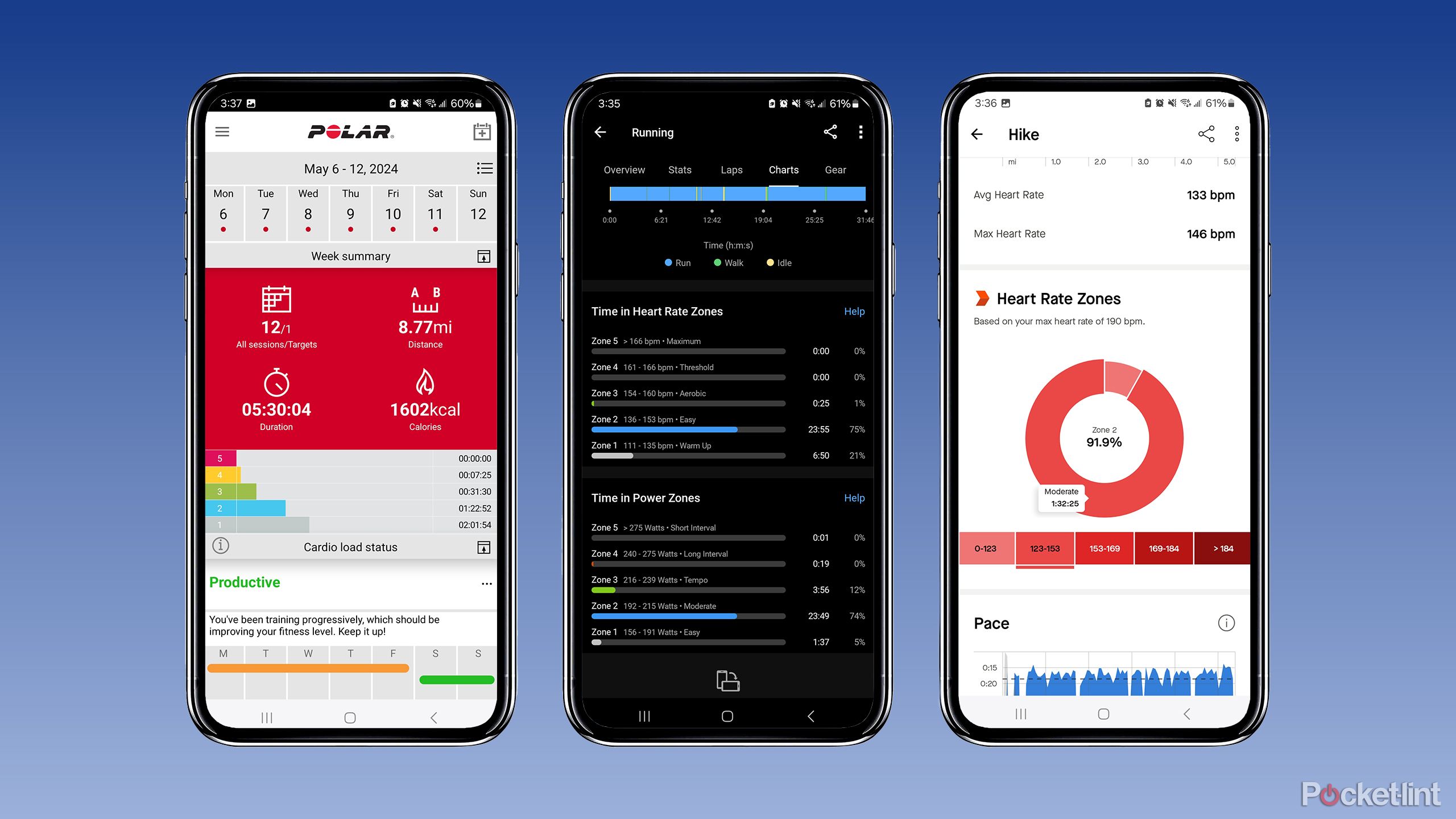Key Takeaways
- Heart rate training is accessible and beneficial, guiding workouts based on different heart rate zones.
- Heart rate zones are specific to each individual’s maximum heart rate, helping track training intensity.
- This type of training requires patience and will take time to see results.
Figuring out the best way to train or how to improve your fitness can be extremely overwhelming, especially if you are new to structured training. While it’s well understood that daily and nightly heart rate data is useful for monitoring your health, keeping an eye on your heart rate during workouts is also extremely valuable. Workout heart rate data can help guide your activities, taking some of the guesswork out of the process. It’s also a highly beneficial way to train, depending on your fitness goals.
It wasn’t too long ago that a heart rate monitor was expensive specialist equipment found only in labs or used by elite athletes. As a result, heart rate training may sound like something that is only for the pros. But now, heart rate sensors are packed into loads of devices at a full range of price points. They are much more accessible, making it easy to keep track of your heart rate and benefit from this useful training method.
While many fitness watches can provide guided training based on heart rate, you may be wondering what it all means. Or, perhaps your watch collects heart rate data, but you’re wondering how to use that effectively. Heart rate is a key factor in fitness, and understanding how to use it can be critical in improving your fitness and cardiovascular health.
Related
Best heart rate monitors: Fitness expert tested and reviewed
From chest straps and arm bands to the new Apple Watch Series 9, these are the best monitors for accurate heart rate stats, according to our testing.
What is heart rate training?
A method of training based on certain heart rate zones
Heart rate training is one of the more popular, approachable, and beneficial methods of training. Distilled down, this style of exercise involves training based on your heart rate. Instead of focusing on a pace, like most are likely familiar with, you use your heart rate to guide your workouts.
“Using HR is basically like using your RPM gauge in your car. It allows you to see how hard your engine (heart) is working,” explains Dr. Scott Ferguson.
“Using HR is basically like using your RPM gauge in your car. It allows you to see how hard your engine (heart) is working,” explains Dr. Scott Ferguson, Assistant Professor of Aerospace Physiology at Embry-Riddle Aeronautical University and founder of Summation Athletics (in the interest of full disclosure: Dr. Ferguson is the author’s husband). “All you’re doing is measuring the electrical impulses of the heart that occur during contraction and using that as a guide to tell you how hard your body is working. It’s a great addition to using perceived exertion.”
Heart rate is often broken down into zones, called heart rate training zones, which cover ranges of heart rates. Without getting too in the weeds, these zones correspond to different energy systems that are used at different workout intensity levels. By working out in different zones, you can make your training more precise and get more out of it.
These zones are based on your maximum heart rate (MHR), so they are specific to you and your body. For a truly accurate number, finding your MHR requires lab testing. But you can get a rough estimate with some basic math. The simplest way to estimate your MHR is to take 220 minus your age. So, for example, a 35-year-old has an estimated MHR of 185. Once you have your MHR, you can establish your different zones.
Broadly speaking, there are five zones for heart rate training. Zone one is a very light run, such as a warm-up or recovery run, at 50% to 60% of your MHR. Zone two is still very easy and light at 60% to 70% of your MHR. Zone three is typically longer tempo runs with moderate intensity at 70% to 80% of MHR. Zone four covers interval training and should be hard at 80% to 90% of MHR. Finally, zone five is short, hard intervals and should be extremely challenging, hitting 90% to 100% of MHR.
While fitness watches like Garmin focus on the five zones, that is a bit more than many need to consider. “There are truly only moderate, heavy, and severe intensity domains, so three zones,” explains Dr. Ferguson. If you work with a coach, they may only focus on three zones as a result. Or, if you want to simplify your own training, you could do the same.
How do you use heart rate training?
Let your goals be the guide
Broadly speaking, you should be working in all training zones, though with most of your training in zones one and two.
How you use heart rate training very much depends on your goals. Broadly speaking, you should be working in all training zones, though with most of your training in zones one and two. Luckily, most watches make the process pretty easy, with color-coded numbers during workouts to show what zone you’re in at a glance. Most will also show you a summary of the time spent in each zone after your workout. Some may even let you set custom zones if you know more specific numbers from testing.
If you want some help with your heart rate training beyond what your watch is providing, there are plenty of free or paid training plans available that use heart rate zones as the basis of the plan. Or, you can also work with a coach for a more personalized approach.
The important thing to remember with heart rate training is that patience is required.
The important thing to remember with heart rate training is that patience is required. Speaking from experience, it can be extremely frustrating as you start with heart rate training, as your paces will be much slower than you likely expected or want when sticking to those lower zones. But it’s important to build your training slowly. It can take roughly six weeks to start to notice changes, so give it time and trust the process.
FAQ
Q: Why is heart rate training beneficial?
There are many benefits to heart rate training. When done correctly, it can help you improve your fitness, increase your running speed, reduce your risk of injury, and help you run further. But what’s really great about heart rate training is that it is a better way of accommodating for the natural ups and downs of training and life.
We’ve likely all had a run or workout that felt easy one day, but challenging the next. That could be from poor sleep, a day of travel, hot weather, or any number of reasons. By using your heart rate instead of pace, you can adjust for those factors to get a better workout in no matter what.
Q: What equipment do I need for heart rate training?
The most important piece of gear for heart rate training is, naturally, a heart rate monitor and some way to sync that data. Most smartwatches and fitness watches feature heart rate monitors, which makes the process easy. However, wrist-based HR sensors are typically less accurate than a chest strap due to how they measure heart rate. For the most accurate results, you should invest in a chest strap that can sync with a device like a fitness watch or even an app on your phone.
Speaking of watches and phones, since you’ll be using this data to guide your workouts, you will want a way to easily see the information during your training session. Since watches collect other useful stats like distance and pace and are easy to see while moving, they are typically the best option. But your phone with a fitness app can also work well if you don’t like to wear a watch.
Trending Products

Cooler Master MasterBox Q300L Micro-ATX Tower with Magnetic Design Dust Filter, Transparent Acrylic Side Panel, Adjustable I/O & Fully Ventilated Airflow, Black (MCB-Q300L-KANN-S00)

ASUS TUF Gaming GT301 ZAKU II Edition ATX mid-Tower Compact case with Tempered Glass Side Panel, Honeycomb Front Panel…

ASUS TUF Gaming GT501 Mid-Tower Computer Case for up to EATX Motherboards with USB 3.0 Front Panel Cases GT501/GRY/WITH Handle

be quiet! Pure Base 500DX ATX Mid Tower PC case | ARGB | 3 Pre-Installed Pure Wings 2 Fans | Tempered Glass Window | Black | BGW37

ASUS ROG Strix Helios GX601 White Edition RGB Mid-Tower Computer Case for ATX/EATX Motherboards with tempered glass, aluminum frame, GPU braces, 420mm radiator support and Aura Sync

CORSAIR 7000D AIRFLOW Full-Tower ATX PC Case â High-Airflow Front Panel â Spacious Interior â Easy Cable Management â 3x 140mm AirGuide Fans with PWM Repeater Included â Black











